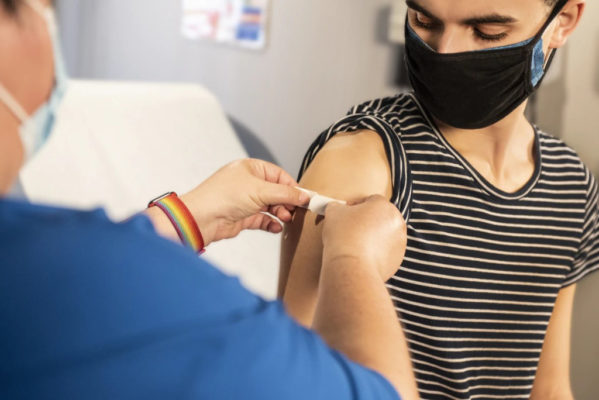Human papilloma viruses (HPV) cause cervical cancer. Infection in adolescence and early adulthood can lead to the development of cancer later in life. However, HPV vaccines dramatically reduce the rate of HPV infection. Countries with high uptake of vaccines can expect to see fewer cervical cancer deaths in the years to come.
Now, the European Union has launched a new Joint Action on HPV Vaccination as part of its ambitious Europe Beating Cancer Plan. A key pillar of the plan is to put European countries on the path to eliminating cervical cancer within a century, in line with a World Health Organization strategy published in 2020.
The EU Joint Action on HPV Vaccination aims to have 90% of girls vaccinated against HPV by the age of 15. In addition, it will support a significant increase in vaccination of boys who can suffer from HPV-related cancers and contribute to the circulation of the virus.

There are big differences in HPV vaccination policies across Europe, with some countries having well-developed vaccination programmes for girls and boys, while others offer the vaccine only to girls. Uptake rates also vary widely. In the EU, only Malta has rates of disease lower than 4 per 100,000 ‒ a level considered low enough to eliminate the disease as a public health concern. Finland and Sweden are on course to hit the target but others have some catching up to do.
Efforts to close the gap will be supported with €3.8 million in direct grants to national health authorities and €1.2 million for civil society organisations. This is expected to help countries with underdeveloped vaccination services to launch large-scale programmes, backed by communication campaigns. New policies encouraging health professionals to check adolescents’ vaccination status at every visit, and to recommend HPV vaccination where appropriate, may also follow.
Unveiling the Joint Action at an online event, European Commission President, Ursula von der Leyen, said working with civil society is crucial to spreading the word about HPV vaccination. ‘HPV is a serious risk, but we have the solution,’ she said. ‘And without HPV, we have a chance to eliminate cervical cancer. This would be an important milestone. It’s within our reach. So let’s move.’
This was echoed by Prof. Andreas Charalambous, President of the European Cancer Organisation, who said eliminating cervical cancer would be an ‘incredible achievement’. ‘We must use every tool we have to boost HPV vaccination uptake,’ he said. ‘Vaccination for girls and boys is the single most efficient prevention tool at our fingertips. It works ‒ the data says so.’
Prof Charalambous said the ECDC should track HPV vaccine uptake, just as it does for COVID-19 vaccines. He also called for a major push in schools and among healthcare professionals to ensure awareness of HPV vaccination. ‘And we need to combat misinformation,’ he added. ‘This is a job for all of us: if you see or hear misinformation on the HPV vaccine it is your personal duty to combat it or refute it.’
Several countries, including Denmark, Ireland and the Netherlands have launched campaigns to counter rumours and inaccurate information which damaged vaccine uptake. Non-governmental organisations, including patient organisations and health professional societies, played a central role in turning the tide.
Tackling cancer inequalities
Europe’s cancer plan aims to reduce inequalities in how cancers are prevented, diagnosed and treated. When it comes to cervical cancer, access to vaccination, screening and testing is a priority. Veronique Trillet-Lenoir, a French MEP who leads the European Parliament’s Special Committee on the Fight Against Cancer said it was unfair that some people in Europe are offered free HPV vaccines while others are not.
‘There are inequalities in vaccination coverage ranging from 30% to 70%; some countries currently only vaccinate girls against HPV,’ she said. ‘We call for 90% of girls to be vaccinated by 2030 and a significant increase in the vaccination of boys within this decade.’

Prof. Nicole Concin, President of the European Society of Gynaecological Oncology, said the experience of Australia shows the positive impact of universal HPV vaccination. ‘Australia started early, vaccinging girls and boys, and they will be the first to eliminate cervical cancer,’ she said. ‘It makes sense to for vaccinate boys as they can transmit the virus and are directly affected by HPV-associated diseases including penis or anal cancer.’
Separately, the EU has launched new grants for research on vaccine confidence in Europe and a project to identify practical barriers to vaccination. Other EU-funded initiatives are also under way including JITSUVAX (on countering vaccine misinformation); ImmuHubs (on vaccination of disadvantaged groups); RIVER EU (on vaccination of ethnic, religious and cultural minorities); and IMMUNION (supporting the Coalition for Vaccination). An EU Joint Action on Vaccination is due to conclude next month.




